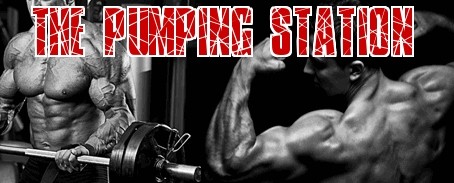The Basics of Weight Training for Women
Article From: Health A to Z
One of the most persistent myths some women have about weight training is that working out with weights will turn them into female hulks.
Unless women hit the gym with a vengeance, determined to look like the cover girl of a muscle magazine, it just won't happen. What can happen, though, is that she will end up with a firmer looking body and more.
Weight training, as it is often called, helps a woman develop a stronger heart and stronger connective tissue. It helps control weight and offers protection against osteoporosis, a major debilitating disease in women after menopause. It also gives a woman power over her own life. Just think: No more waiting on the bag boy to take out the groceries or the handy man to carry boxes to the basement.
Weight-training studies show that men and women can have a fairly similar increase in strength from resistance training, but women usually start out at a lower level in terms of strength, according to Robin Stuhr, M.A., administrative director and exercise physiologist at the Women's Sports Medicine Center at the Hospital for Special Surgery in Manhattan, N.Y.
"Most women just don't have the ability to have an increase in muscle size that men do," says Stuhr.
The reasons, she says, are physiological and hormonal. The average man is taller and stronger than the average woman and, thus, generates more force. Men also produce about 10 times the testosterone of a woman. Testosterone, Stuhr explains, affects the ability to increase muscle size (muscle hypertrophy). A woman who has a bigger body type or more testosterone may have a greater potential for strength and power development than other women.
Getting started with your weight training
Even if you're a sturdy 5-foot, 9-inch woman with a higher testosterone level, lifting weights 45 minutes twice a week won't turn you into a muscle-bound bodybuilder. "You have to have the ability to tolerate a hard-training regimen to have a large increase in muscle size," Stuhr says. "Most women are not training at the levels of power lifters."
For those women interested in getting started with weight training, Stuhr suggests first finding someone qualified and experienced to help because it's more likely you will get a good program. "There are a lot of trainers around who have minimal experience. Find out what kinds of certification they have," she says.
The American College of Sports Medicine certifies instructors, and The American Council on Fitness allows visitors to search its site online for an ACE-certified personal trainer or group fitness class in their state.
Set for some crunches? Stohr offers these other tips to kick off a strength training regimen:
- Allow yourself 30 to 45 minutes for a basic workout.
- Start off with 10 exercises that work on the lower body, trunk and upper body.
- Strive for one to three sets of eight to 12 repetitions, separated by 13 to 30 seconds of rest in between each set.
- Try to do strength training two days a week. If you would like to do more, keep it to one day on, one day off for rest.
- Start off easy and build up; increase the weight as you continue with the program.
"It's always better to start off with resistance that's too easy than too hard," Stuhr says. "The most important goal is to learn proper technique. If you are straining and the weight is too much, the chance of injuring yourself is higher."
Once you have the pattern of working out and you have the technique down, increase the resistance. "Choose a weight or resistance that makes your muscles tired at the end of that particular set of reps," Stuhr says. "You should never feel pain, but you should feel fatigued or feel the burn, as Jane Fonda used to say. You have to challenge your muscles. That's the way you get stronger."
Where and what to lift
There are lots of different ways to get stronger - dumb bells, calisthenics, weight machines, free weights, stretchbands. Beginners often find it easier to use machines, Stuhr says.
Weight training doesn't have to be done at a gym. It can be done in the home, with simple equipment, such as free weights and stretch bands, and perhaps with an added incentive of having a workout buddy or a workout tape, according to Stuhr.
Finally, Stuhr says women need to look at their schedule and find out when their workout would fit best. She says working out earlier in the day is usually better because more people tend to stick with it. "As your day progresses, you get more mentally tired and more things get in the way," she says.
Click Here to Sign Up for Your Free Bodybuilding Magazine Subscription
